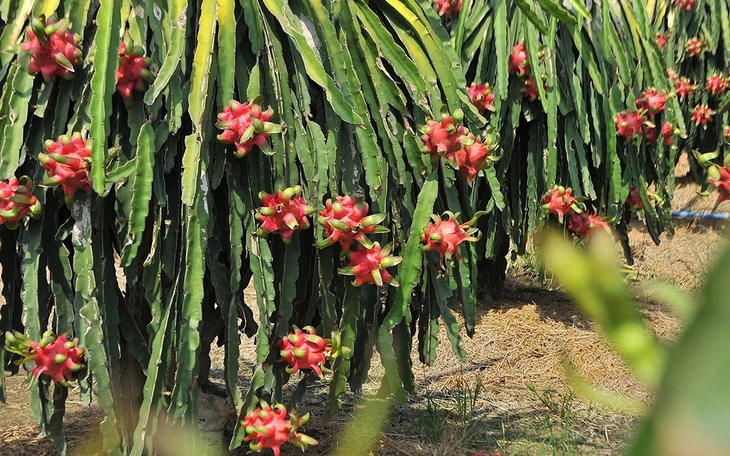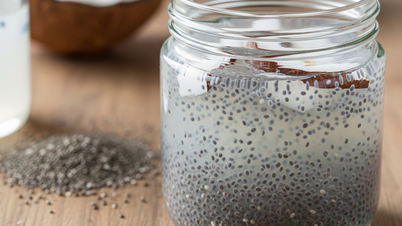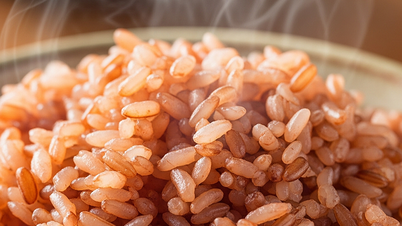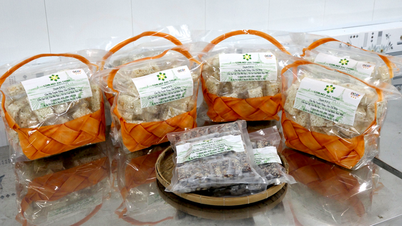
Dragon fruit is grown a lot in Vietnam - Illustration photo: TTO
Dragon fruit belongs to the cactus family and is native to South America. It comes in many different colors such as yellow, red, white or pink fleshed dragon fruit, but there is not much difference in nutritional value between them.
The name of this dragon fruit comes from its appearance. The fruit is covered with overlapping "fins" that look like dragon scales. Here are some important benefits of this fruit.
Supports gut health
Dragon fruit is rich in fiber to aid digestion and prevent constipation. One cup of dragon fruit (a measurement equivalent to 1 large banana, or 1 orange or 8 strawberries) provides 3.24 grams of fiber, which is about 11% of the recommended daily intake.
Dragon fruit also contains prebiotics called oligosaccharides. These beneficial bacteria help stimulate the growth of probiotic bacteria such as Bifidobacteria and Lactobacillus. Probiotics have been shown to prevent or help treat digestive disorders, including irritable bowel syndrome.
Helps regulate blood sugar
Dragon fruit may help control blood sugar levels. Some evidence suggests that red dragon fruit may regenerate beta cells in the pancreas, which produce insulin and amylin. Both of these hormones play a role in regulating blood sugar.
The anti-inflammatory effects of dragon fruit may also reduce the risk of type 2 diabetes. A review of four studies found that dragon fruit helped lower fasting blood sugar in people with prediabetes.
Eating larger portions of dragon fruit helps reduce blood sugar in people with type 2 diabetes.
Prevent the risk of certain diseases
Dragon fruit may help prevent diseases such as diabetes, heart disease and cancer thanks to its antioxidants that have anti-inflammatory properties.
Antioxidants called betacyanins give the flesh and skin of red dragon fruit its color and help reduce oxidative stress, which is cell damage caused by unstable atoms called free radicals. The buildup of free radicals over time contributes to aging.
Red and white dragon fruit are also rich in phenolic compounds, which contribute to their flavor, color, and health benefits. One study found that red dragon fruit had the highest concentration of polyphenols and antioxidant activity.
Some studies have shown that the prebiotics in dragon fruit may reduce the risk of colon cancer by affecting the gut microbiota. Additionally, other antioxidants may also protect against various types of cancer.
Immune System Support
Dragon fruit has antibacterial, antifungal, and antiviral properties. Several studies have also shown that the flesh and peel of the fruit inhibit foodborne microorganisms, including yeast and mold.
Eating dragon fruit triggers changes in the gut microbiota, thereby activating and supporting the body's overall immune response.
Nutritional value of dragon fruit
A serving of dragon fruit (about 80g) provides the following nutritional values:
Calories: 122
Fat: 0.378g
Sodium: 1.8mg
Carbohydrates: 29.2g
Fiber: 3.24g
Added sugar: 0g
Protein: 1.22g
Can you be allergic to dragon fruit?
Although rare, if you are allergic to dragon fruit, you may experience symptoms such as a red rash, swollen tongue, and hives. Eating a lot of dark red foods, such as red dragon fruit, can cause pseudohematuria. This occurs when your urine is pinkish-red in color and is not due to blood.
Source: https://tuoitre.vn/nhung-loi-ich-suc-khoe-bat-ngo-cua-trai-thanh-long-20250824080955359.htm






![[Photo] General Secretary To Lam attends the 80th anniversary of Vietnam's diplomacy](https://vphoto.vietnam.vn/thumb/1200x675/vietnam/resource/IMAGE/2025/8/25/3dc715efdbf74937b6fe8072bac5cb30)





































































































Comment (0)